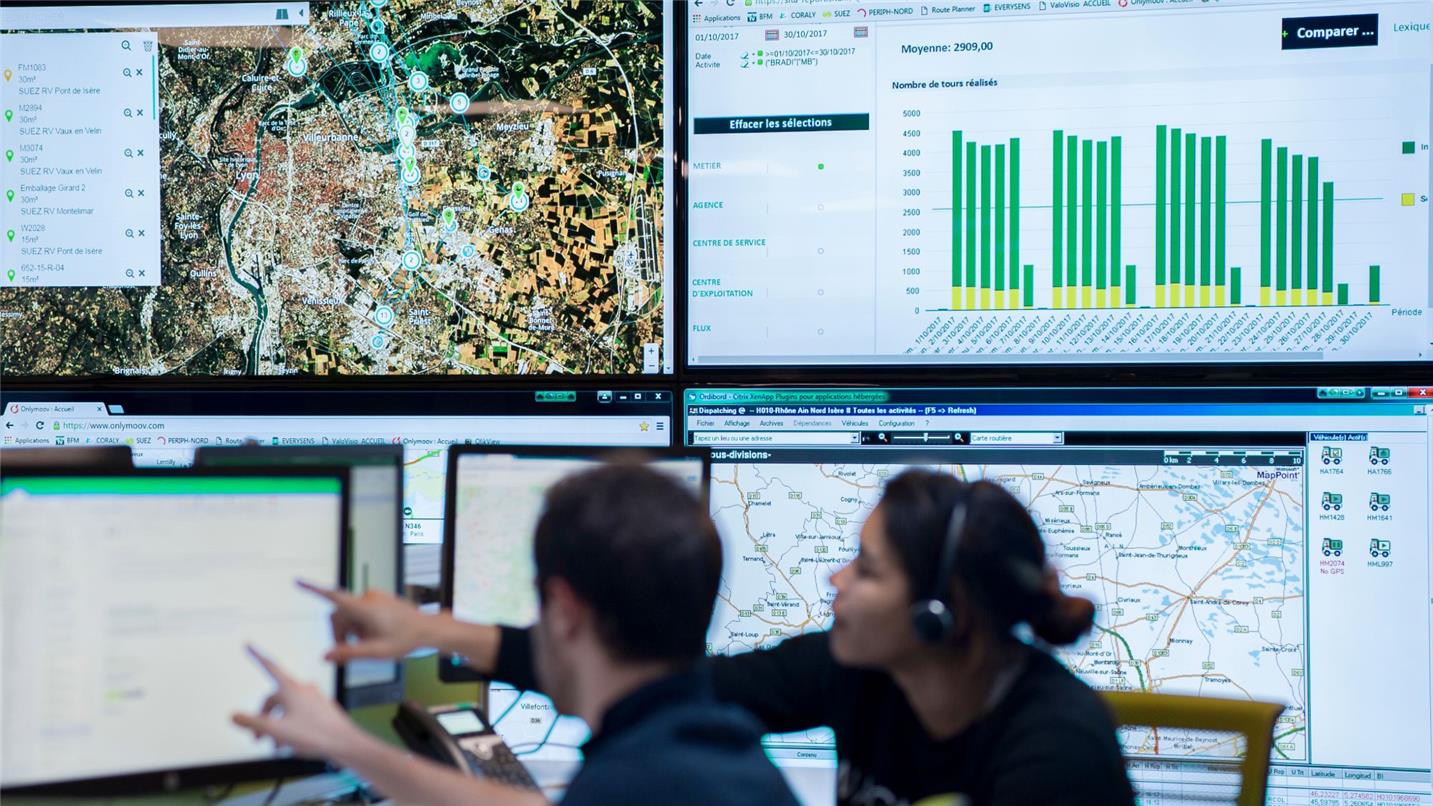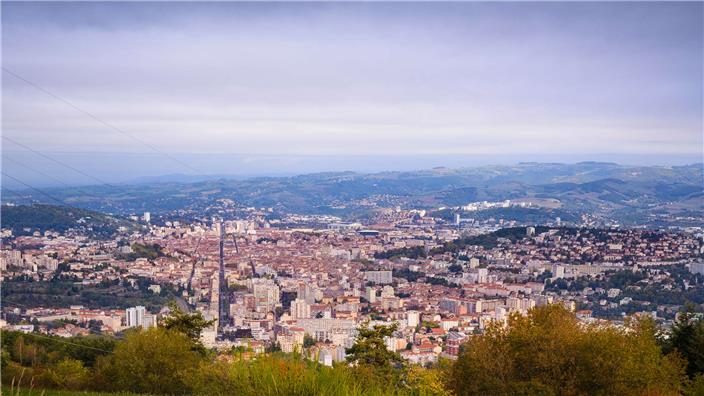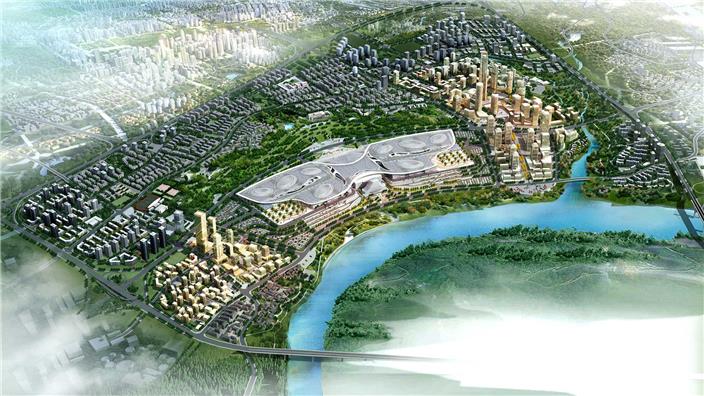- Our digital solutions to optimise urban services
- Centralised intelligent systems
- Users at the centre of the Smart City
Form is loading.
If the form does not load after a few seconds, please reload the page (CTRL + F5 or (or Cmd + Shift + R on Mac).
Harnessing urban data to do better... with less!
Cities face a double challenge: the growth of urban areas and increased pressure on local public finances. To meet them, we offer innovative solutions that are based on the circular economy and digital transformation.
For more than 25 years, as designers, integrators and operators of urban systems, we have been developing connected and intelligent solutions that uses a myriad of data to optimise the management of our services in water, sanitation and waste management (optimised management of drinking water networks, leak detection, optimised management of sanitation networks, waste collection, etc.).
These solutions are the result of many years of research and development. They benefit from the business expertise and know-how of our integrated operators with advanced digital models. These solutions make it possible to:
- Decrease operating expenses and the impact on resources (reduction of fuel consumption for collection vehicles, better detection and reduction of water leaks on the networks, etc.),
- Improve the quality of service (fewer skip overflows, less nuisance from collection vehicles, fewer network overflows, etc.)
- To forecast and improve crisis management, with a faster return to normal.
These solutions can be used within the framework of our operating contracts and are also offered to cities that wish to equip themselves with them for their own use.
An intelligent system to manage urban services more efficiently
A city is a complex combination of interdependent services such as water, energy, transport, lighting, environmental services, etc. This is why we offer an integrated vision of the city and bring our know-how as an urban service operator to the territory's stakeholders to co-construct the city of tomorrow with them.
The health crisis linked to Covid-19 has reshuffled the cards, pushing public and private decision-makers to rethink the ways of organising the city for more efficiency and a capacity for resilience adapted to today's challenges. In addition to ensuring the continuity of essential services (water supply and wastewater management, waste collection, energy supply, transport, health service, etc.), the crisis has highlighted the need to:
- Facilitate the communication between the city's stakeholders - citizens, the economic world, local governance, etc.
- Strengthen the interconnections between the city's services to ensure greater anticipation, better sharing of information, better coordination and faster intervention by all the actors in the territory.
This is why we support cities in the implementation of centralised urban systems, making it possible to know and share in real time the status of services and infrastructures and to de-silo services.
For example, in France, we supported Dijon Métropole in the implementation of the Connected Control Centre, alongside Bouygues Energies & Services, for the OnDijon project. Backed by a hypervisor, the system insures the remote management of all urban equipment (traffic lights, public lighting, video protection, etc.) in the 23 municipalities and the coordination of teams and interventions. This project ensures the rapid and efficient organisation and coordination of urban facilities and services.
The Smart City at the service of users
The diversity of the challenges faced by cities is such that no single public or private actor can address them alone. The city of tomorrow must be more collaborative and involve all stakeholders to respond in a concerted way to its challenges.
Data from urban services is a necessary lever for building the city of tomorrow, but not sufficient. The use of connected objects, data integration and processing platforms, must be at the service of people and better living together. For us, it is the uses that take precedence, the achievement of the ambition set by the city and not the technologies as such.
We are convinced that it is important to share more with users, to better inform them and allow them to be actors in smart city projects. For example, in France, the Dijon Metropole project in which we participated, has enabled the development of a citizen application that has been a great success. In Saint-Etienne (France), as part of an innovation partnership, we have set up a digital platform that aggregates the data measured in the territory and enriches it by cross-referencing it with others. The initial objective was to enable the inhabitants of a district to effectively manage their energy consumption. Thereafter, this platform was opened to citizens to allow developers to create other useful applications.
All the actors of a city (users, elected officials, engineers, urban planners, etc.) must be involved in designing a smart urban model, adapted to local needs It is on this basis that we design new services whose first beneficiaries are the users.
They trust us
The Dijon Connected Cockpit: an effective crisis management tool
The Connected Cockpit, backed by a hypervisor, is the backbone of the smart metropolis project wanted by Dijon (France). It ensures the remote management of all urban equipment, traffic lights, public lighting, video protection, etc. of the 23 municipalities in the territory and the coordination of teams and interventions.
OnDijon, the name given to the project started in 2019, improves the efficiency of public services through better coordination, anticipation, knowledge of the territory and speed of reaction.
During the 2020 health crisis, the CCC demonstrated the effectiveness of its model by ensuring the rapid and efficient organisation and coordination of urban facilities and services.
A toll-free number was set up before the first lockdown, to respond to residents' concerns and questions about vital services (commerce, health, etc.), identify isolated people and give relevant answers to the social difficulties encountered. OnDijon has made it possible to adapt and prioritize public action to better respond to the crisis.
OnDijon made management easier during the crisis, the people gathered here learned to work together, share information and the control centre allows decisions to be taken quickerDenis Hameau
Frequently asked questions
1 - Carrying out a diagnosis to objectify current and future needs
We carry out an in-depth diagnosis of the territory by identifying the needs of the city. We are committed to understanding the expectations of citizens and elected officials on dimensions as varied as mobility, safety, the environment, the living environment, the efficiency of services, etc.
To consider the long-term future, it is also fundamental to take into account urban population growth, the financial pressure on city budgets, the fair distribution of resources and the growing desire of citizens to improve their quality of life.
The diagnosis, analysed with the stakeholders, makes it possible to develop possible development scenarios.
2 - Translating cities' ambitions into concrete objectives
The next step is to concretise the political ambition of a city and translate it into projects. Thus, based on the diagnosis carried out, we refine the objectives defined and adapt them to the specificities of the territory.
We translate scenarios into concrete projects. The creation of urban digital platforms can be an example of useful projects as it allows data to be collected and analysed to optimise infrastructure and services, such as energy consumption, circular economy, smart street lighting and mobility.
3 - Defining the best implementation options
As an integrator of urban planning solutions and with our partnership culture, we identify the best partners and technologies in cooperation with the community.
The implementation of these projects makes it possible to experiment with new structuring of groups such as public-private partnerships, but also new business models, to be invented on a case-by-case basis.
4 - Performance monitoring and control
The local authority must be able to manage its projects in order to make the right decisions in a logic of continuous improvement. To do this, it is necessary to equip yourself with means of measuring results with the right dashboards. The solutions are thus continuously tested and measured by means of indicators.
At the end of an observation period, they can be adjusted to further improve the performance of the system with regard to the strategic objectives initially defined by the local authority.
Digital solutions generate significant greenhouse gas emissions: 4% of global emissions, which is rising sharply, in particular due to the increasing use of AI. These figures reflect the rapid evolution of digital uses, which present us with the growing challenge of reconciling the digital transition and the ecological transition.
These technologies help to reduce the consumption of energy, resources and, ultimately, CO2 emissions from urban services. If waste collection is only carried out when the bin is full, if the public lighting is only switched on in the presence of passers-by, or if the automatic watering is only triggered, when necessary, then these solutions are fully in line with the ecological transition.
We are co-constructing solutions with cities to place digital technology at the heart of their ecological transformation and make them smart cities.
But the implementation of digital solutions to improve the quality of public services must take into account their impact on the environment and the climate. The development of responsible digital strategies is therefore essential to:
- Quantitatively and qualitatively assess the impact of the sector in terms of emissions, resource consumption,
- Raise awareness among all territorial actors and populations on the subject,
- Implement concrete actions to limit the impact of digital technology on the territory.
We are signatories of the Planet Tech'Care initiative, a platform for connecting training players who are mobilised to reduce the environmental footprint of digital technology.
A true vector of innovation, a more sober digital technology, demonstrates that ecological and digital transition go hand in hand in the design of resilient and attractive cities. We are only at the beginning of digital sobriety, but we must act collectively to work on this major issue.
In France, in Angers, we combine digital sobriety and saving the resources available in the territory. Regarding digital sobriety, the storage capacity of the chosen hard drives is 4 times greater than that of standard drives, allowing a 96% reduction in energy expenditure. To obtain environmental benefits, the use of digital technologies renders possible the reduction of water consumption for watering green spaces (by 30%) and night-time leakage volumes (by 20%).
In France, La Rochelle region has set itself an ambitious goal: to divide its greenhouse gas emissions by 4 by 2040 to achieve carbon neutrality. Through the "La Rochelle Zero Carbon Territory" project, our teams are developing the Responsible Digital strategy. To do this, they will assess digital maturity and carry out an analysis of the environmental impacts through the carbon footprint and the life cycle analysis, on digital activity at the scale of the agglomeration. A roadmap built with the actors of La Rochelle will then be drawn up in order to involve the territory in an overall approach.
Cities are currently experiencing a crucial moment in their evolution. As the world's population becomes predominantly urban, cities of all sizes need to reinvent themselves. This transformation is anchored in 5 priorities that define the areas of reflection and action of local elected officials and local authorities: resilience, sobriety, environmental preservation, inclusion and innovation.
- Resilience: cities must anticipate and manage crises (climate, health, etc.) through connected and shared systems to effectively coordinate urban services in times of crisis.
- Sobriety: reducing the ecological footprint of cities is crucial. Smart solutions make it possible to optimise resources (water, energy) and limit CO2 emissions while reducing costs.
- Nature in the city: Nature plays a key role in urban resilience and well-being. It must be integrated into urban projects to improve quality of life and support biodiversity, with the help of digital solutions.
- Inclusion and collaboration: the city of tomorrow is built in a collaborative way, involving citizens in decision-making.
- Innovation: Innovation is key to meeting future urban challenges. It must be used on a large scale to create services that are more efficient, ecological and adapted to the needs of the inhabitants.
A reflection on these 5 major challenges will make it possible to build smart, resilient and sustainable cities, by integrating digital solutions and promoting cooperation.



